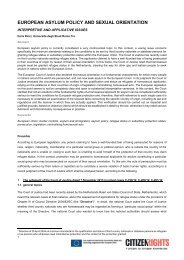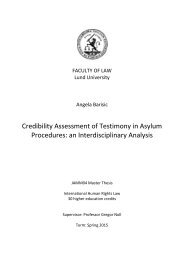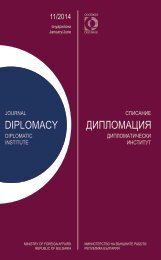AEMI
AEMI-2016-web
AEMI-2016-web
Create successful ePaper yourself
Turn your PDF publications into a flip-book with our unique Google optimized e-Paper software.
‘Migration and the Indian Ocean Rim<br />
(IOR) since 1450: the Impact of<br />
In-migration in Sustaining the European<br />
Economy and Generating Cultural<br />
Heritage in Both Regions’<br />
Nonja Peters<br />
Introduction<br />
On 21 May 2014, the Council of the European<br />
Union adopted ‘Conclusions on<br />
cultural heritage as a strategic resource<br />
for a sustainable Europe’. At the EU<br />
meeting in Brussels, that day, a historic<br />
policy approach to cultural heritage was<br />
adopted - tangible, intangible or digital<br />
- recognising it as a unique and non-renewable<br />
resource and a major asset for<br />
Europe and for the entire European<br />
project (in which I include Britain). The<br />
‘Conclusions’ also emphasized the important<br />
role that cultural heritage plays<br />
in creating and enhancing social capital.<br />
On a conference tour of Europe in<br />
2012, that included visits to two iconic<br />
collection institutions – the British Museum<br />
(London), and the Rijksmuseum<br />
in Amsterdam and Rijksmuseum van<br />
Oudenheden (RvO) in Leiden, what<br />
impacted on me was that the volume<br />
of artifacts on display were almost exclusively<br />
‘acquired’ from outside Europe<br />
predominantly from Rome, Greece, the<br />
Middle East and Indian Ocean Region<br />
(IOR). 1 Most of the artifacts were acquired<br />
by maritime explorers during the<br />
‘Age of Exploration’ from the late 1400s<br />
to mid 1800s, from nations and states<br />
the British and Dutch had conquered.<br />
The colonialism and imperialism that<br />
resulted from these East India Company’s<br />
incursion into the IOR were in<br />
force until the mid twentieth century.<br />
Although the curatorial focus of these<br />
two museums is the history of humans<br />
and culture, it could be argued given<br />
their collections and displays, that they<br />
in fact commemorate colonialism and<br />
imperialism. 2 Yet these two cultural institutions<br />
along with the many other<br />
museums in both countries are considered<br />
icons of cultural heritage. Viewed<br />
from a heritage tourism perspective they<br />
make major contributions to the revenue<br />
of their respective countries. For<br />
example, in 2014 the British Museum<br />
(established in London 1753) recorded<br />
its annual attendance at 6.8 million visitors.<br />
3 Visitation at (all) Dutch museums<br />
is around 20 million per annum. This<br />
noteworthy level of visitation also confirms<br />
the high level of social capital they<br />
generate.









